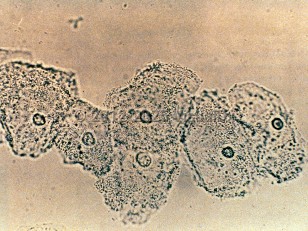The vaginal microbiome is constantly in flux because of menses, sexual contact, and other external reasons. Bacterial vaginosis (BV) results from a shift in the vaginal flora from predominantly H
2O
2-producing organisms (usually
Lactobacillus spp) to a variety of gram-negative and anaerobic organisms (such as
Gardnerella vaginalis and
Mycoplasma hominis and
Prevotella,
Peptostreptococcus,
Mobiluncus, and
Bacteroides spp) with a dramatic increase in the total number of organisms. This shift has immunomodulatory consequences (changes in cytokine production, loss of secretory leukocyte protease inhibitor, decreased amounts of immunoglobulin A [IgA]) that reduce protection against sexually transmitted infections (STIs) and can lead to a vaginal discharge.
BV is the most common etiology of vaginal discharge in people of childbearing age; however, a majority of patients are asymptomatic. In the United States, the estimated prevalence is anywhere from 11% to 33% of women, with some difference in prevalence among ethnicities (a higher rate in Black patients has been observed).
The diagnosis and management of BV is important for several reasons, including:
- BV increases the risk of acquisition of STIs including HIV, gonorrhea, Chlamydia, Trichomonas, human papillomavirus (HPV), and herpes simplex virus type 2 (HSV-2).
- BV has been associated with adverse pregnancy outcomes (premature membrane rupture, early labor, preterm birth, intra-amniotic infection, and postpartum endometritis).
There are several other disease entities associated with BV such as
pelvic inflammatory disease (PID [although this may occur secondary to acquisition of gonorrhea or
Chlamydia]) and
cervical cancer; however, there is not as strong of a causal link compared with the conditions listed above.



